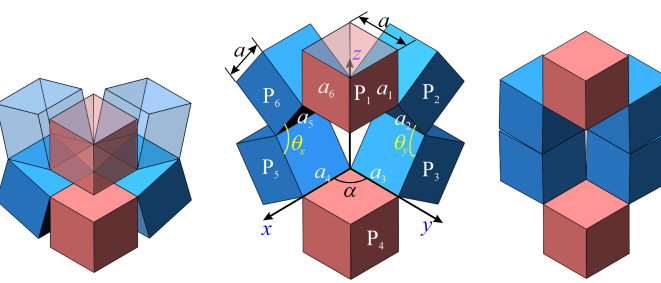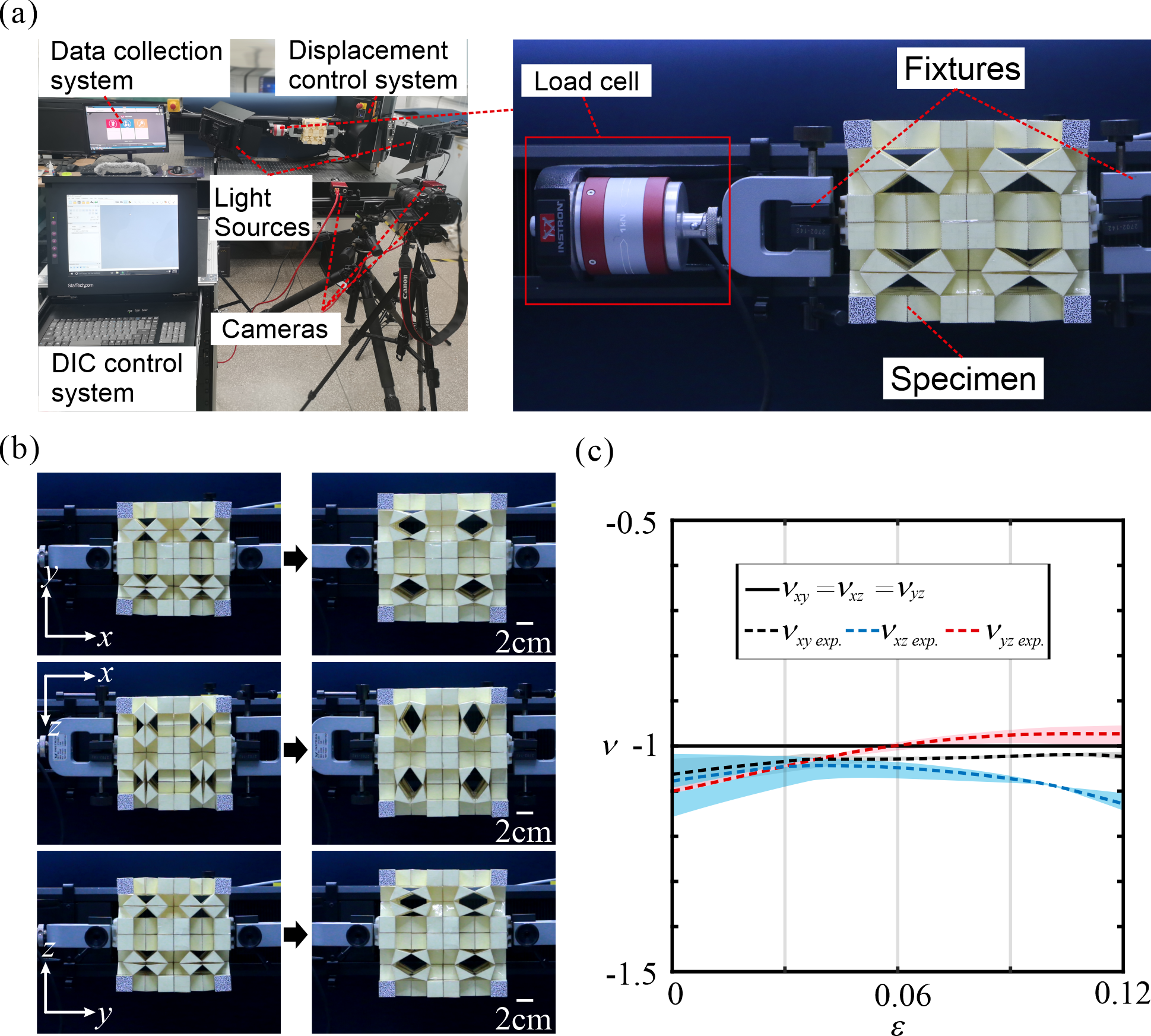Research
Team
Publications
News
|
New Publication: Linkage-based three-dimensional kinematic metamaterials with programmable constant Poisson’s ratio
From: Date: 2023-09-22 Metamaterials constructed from the periodic tessellation of units have extraordinary physical properties. The mechanical properties of most mechanical metamaterials are based on the large structural deformation of units, while the transmission and synchronization of these motion deformations among units are poor which leads to difficulty in designing and controlling the properties. Fig. 1. The basic kinematic element of the kinematic metamaterial with six cubes based on Sarrus linkage. Fig. 2. The construction of an orthotropic kinematic metamaterial. (a) the modified element by cutting half of the blue cubes; (b) an orthotropic kinematic unit of four elements with triangular prisms on the top and bottom surfaces; (c) the deformation path of the orthotropic unit and the typical states, and (d) the dimensions of the unit during the movement. Eight kinematic units can be tessellated in space by sharing facets to construct a metamaterial of 2×2×2 units, as shown in Fig. 3. Through theoretical calculation and experimental verification, as shown in Fig. 4, it is found that the metamaterial has a constant -1 Poisson’s ratio characteristic. Fig. 3. A 2×2×2 unit metamaterial constructed by tessellating the unit in three orthogonal directions. Fig. 4. Experimental process and Poisson’s ratio results of the metamaterial. We then established the relationship between the geometric dimensions (lx, ly, lz) of the triangular prism in the kinematic units and the Poisson’s ratio of the metamaterial. By varying the geometric dimension, the theoretical Poisson’s ratio and engineering Poisson’s ratio of the metamaterial structure are calculated respectively, and the comparison shows that they are approximately constant and equal. A metamaterial with dimensions lx = 3a/2, ly = 2a/3, lz = a was designed and the experimental results show that the metamaterial has different constant negative engineering Poisson’s ratios which are approximately equal to theoretical Poisson's ratio and experimental results, as shown in Fig. 5. Fig. 5. The metamaterial with anisotropic constant negative Poisson’s ratios. Further, in the variation range (0,+∞) of the geometric dimensions of the triangular prism, the instantaneous Poisson’s ratio of the metamaterial can be programmed in the range (-∞,0). Fig. 6. The contour of Poisson’s ratios vs. li/a and lj/a (i, j = x, y, z and i ≠ j). This work was published in Materials & Design. This work proposed a new approach for constructing programmable metamaterials based on the kinematics of linkages, which is conducive to the design of novel programmable metamaterials.
Yang Y#, Zhang X#, Maiolino P, Chen Y*, You Z*. Linkage-based three-dimensional kinematic metamaterials with programmable constant Poisson’s ratio. Materials & Design, 2023, 233, 112249. |





